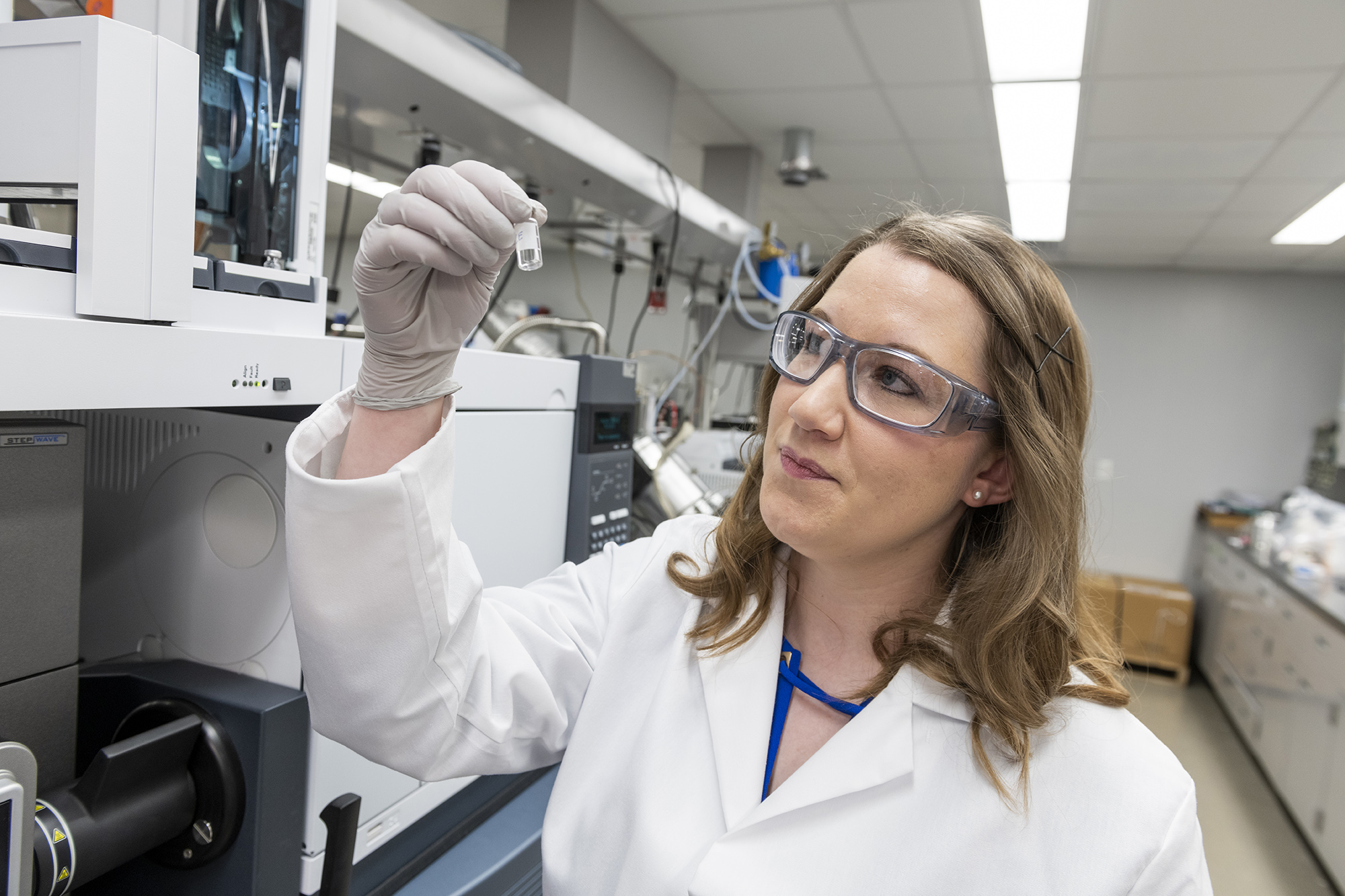Evaluating Off-the-Shelf Tape Lift Products to Detect Chemical Threat Agents
One aspect of our work is testing and evaluating chemical detection methods, with the goal of refining their use in the field. Sometimes, this includes investigating non-traditional detection methods.
The tape lift sample collection technique is a simple and effective approach for nondestructively collecting chemical attribution signatures (CAS) from surfaces of varied sizes, shapes, and textures. It can be used by law enforcement and intelligence communities for capturing residual particulate and foreign matter that may be present on those surfaces.
Unfortunately, traditional sample collection materials can be expensive, unavailable, or complex to use when needed on crime scenes. With this in mind, we researched to identify and evaluate alternative commercial-off-the-shelf (COTS) tape products for optimizing the tape lift technique with testing and evaluation across a variety of chemicals. By exploring alternative, readily available, COTS materials for use in these scenarios, we will help reduce cost and application or operation complexity.
The five COTS materials we chose to work with were duct tape, print lifters, command strips, pore strips, and silly putty. The tape lift products were evaluated for interferences with and recovery of 14 select test chemicals, including toxic industrial chemicals, pesticides, rodenticides, and the pharmaceutical acetyl fentanyl.
“Spiked” Analytical Results
First, each of the tape lift products were “spiked” with the test chemicals to determine their chemical uptake. This served to determine whether interferences that would affect target identification were present in the tape lift materials and whether the materials would degrade the target chemicals. Each sample was then weathered to allow for chemical evaporation, followed by chemical extraction.
No samples were found to have interferences that would lead to false-positive detections of the target analytes studied. Overall, duct tape had the highest chemical recoveries across all analytes; silly putty had the lowest chemical recoveries across all analytes. Pore strips, command strips, and print lifters each showed mixed results.
Tape Lift Sampling Results
Each of the tape lift products were then evaluated on their chemical uptake of the selected targets from several commonly encountered interior surface materials, including borosilicate flat plate glass, ceramic glazed tile, and acrylonitrile butadiene styrene (ABS) plastic.
The test chemicals were applied to each of the surface materials individually. The tape lift products were then used to sample each surface type, with the tape lift substrates then extracted using a solvent. Following recovery procedures, a chemical uptake analysis was conducted to evaluate how each tape lift product performed when applied to each of the surfaces containing the test chemicals.
Duct tape and print lifters performed similarly, but with statistically significant differences for eight of the 14 analytes. Generally speaking, the duct tape had the best recoveries across surface and tape lift pairings, followed closely by the print lifter. The command strip performance was inferior for these analytes and extraction conditions.
Based upon the wide availability, low cost, and highest analyte recoveries, duct tape was proven to be the best overall tape lift product when using the extraction methods performed in this study. Because factors such as temperature, moisture, weathering, and surface type may impact recovery rates and were not tested in this experiment, it cannot be concluded that duct tape is the optimal product in all field scenarios. That being said, organizations employing cotton gauze as the sole wipe or surface sampling tool should seriously consider adding materials such as duct tape to collection kits.
It is also notable that even the most volatile analytes were detected in the ABS plastic samples, regardless of tape lift material used. The slightly porous plastic substrate provides better target retention than the nonporous glass and tile surfaces. Forensic field operators should sample surfaces made of ABS plastic, such as keyboards, phones, and other common materials, to capture volatile chemicals present at the scene of an event.
Read our published article titled Tape Lift Sampling of Chemical Threat Agents in Wiley Online Library.

GETTING STARTED WITH MRIGLOBAL
Contact MRIGlobal to further understand how we power CBRNE Tech Index. Their expertise in testing and evaluating Chemical, Biological, and Explosives detection equipment and products for use in the field or laboratory is world-class and helps counter the WMD threat.
As a not-for-profit contract research organization, we have proven ourselves as an objective partner driven to make our clients’ products more successful. We specialize in defense, human health, pharmaceutical sciences, in-vitro diagnostics, energy, agriculture, and global health.
To learn more about the work we’ve done or how we can help you, contact us today. If you are part of an agency, business, or academic institution seeking assistance with a project, use our Project Quote Tool to get started.
SIGN UP FOR OUR NEWSLETTER
Sign up for the MRIGlobal newsletter! It’s the best way to get the latest updates in the world of applied scientific engineering research delivered directly to your inbox.

